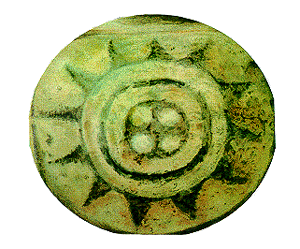Natchez Sacred Fire

|
|
Design symbolizing the relationship between the sacred fire (inner cross within circle) and the sun ( outer rayed circle)
|
Fire has a special symbolic quality among Southeastern Indians, among whom it is regarded as the Middle World manifestation of the power of the Sun. The sacred fires European explorers witnessed burning in temples on the elevated surfaces of earthen platform mounds were literal embodiments of the power of the sun within the Indian communities. Sacred fires were fed by four logs oriented to the cardinal directions. Offerings of animal fat, grain, or tobacco were placed in sacred fires during the most important community ceremonies. The fragrant smoke rising from the fire and dissipating into the air carried the community’s intentions to Above World deities. The sacred fire was thus a key link in the Southeastern Indians’ three-layer universe. As such, caretaking of the sacred fires followed special rules, the violation of which brought dire consequences. The following Natchez story provides an example of what might happen when sacred fire keepers grew careless. The Suns referred to in this story are the hereditary line of community leaders who preside over sacred temple rituals that maintain the community’s wellbeing.
The sacred fire in the Natchez temple was always attended by two guardians, to ensure that it never went out. One time it happened that one of the guardians went out for some reason, and while he was away his companion fell asleep. Upon awaking, he discovered the fire had gone out. The other man had not yet returned, so he decided to conceal his error. He asked a man passing by the temple for a coal to light his pipe; he then used the coal to secretly relight the temple fire. This produced an impure fire, and immediately sickness took hold of the Suns. In a few days nine Suns died in rapid succession, and it was necessary to send many other people to serve those Suns in the spirit world. Then the guardian who rekindled the impure fire grew ill himself. Feeling that he would not live much longer, he confessed his deed to one of the great Suns who remained alive. The great Sun immediately extinguished the impure temple fire and had pure fire brought from one of the other temples. The Suns ceased dying and community order was restored.
|


